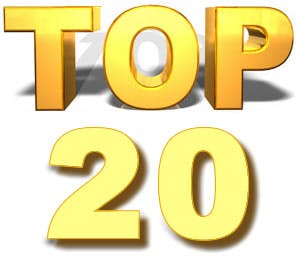Editor’s note: Each Tuesday here at TLNT, Dr. Wendell Williams will detail the seven different obstacles that need to be addressed by management before any organization can achieve and build a Top 20 workforce.
Question: How much time and energy do you invest to purchase a $100K copier compared to hiring a $100K employee? Which decision is most likely to cost you the most if you get it wrong? Get the point?
We analyze a big-dollar piece of capital equipment as if our life depended on it, but we are willing to drop the same dollars on an employee based on a short conversation.
Professional recruiters are my favorite example. Although they market themselves as delivering the best possible candidate at the best possible price, they often ask me how to hire better recruiters. Doesn’t that seem somewhat strange to you?
Why aren’t many recruiters better?
There are several reasons why this happens:
- There is a general lack of understanding about how to predict employee performance pre-hire.
- Our human nature compels us to hire people we know, instead of people who can do the job.
- People seldom put numbers on poor employee performance.
- Unless one performer stands out, employees all merge together on the common payroll.
- We seldom hold people accountable for misspending the organization’s money on a bad hire.
- Managers are not supposed to make mistakes. Admitting publicly to hiring the wrong person is a bad career move.
- Once they hand-off a candidate, HR, the gatekeeper to the organization, does not live with the consequences of poor performing employees.
I can cite facts and figures all day, but no one intentionally hires a poor employee. Nevertheless, a casual glance around most offices shows about 20 percent of employees are high producers, 20 percent low producers, and the rest about average.
The ROI of improving employee quality
At the most basic level, this means more people on the payroll to do the same amount of work. Looking a little deeper, we have to add the cost of recruiting, onboarding, training, and learning the job. Looking a little broader, we have to add a shallow promotion pool, cost of avoidable mistakes, legal exposure for wrongful termination, and potential for defending discrimination charges.
It’s a staggering number, but as a rough measure, unnecessary employee expenses account for 20 percent of annual payroll for unskilled employees, 30 percent for skilled and semi-skilled, and 50 percent for professionals and managers.
To get a qualitative idea of the cost, imagine what your organization would be like if, instead of 20 percent high producers, you had 70 percent to 80 percent; if the majority of your sales staff were as effective as the current top 20 percent; or, produce the same amount of work with fewer employees.
There is not better investment you can make than improving the quality of employees. You can think of it as an ROI every payday. But hiring better employees is not a new or extraordinary idea.
Records exist from the Han Chinese Dynasty over 2200 years ago documenting an improved administrator selection system. In the U.S., Sears, ATT and the Federal Government have been using these methods since the early 20th century. However, in an unfortunate example of mis-marketing, they were called assessments.
How to hire better people
Before you dismiss assessments as unusual or different, I would like to remind folks that assessment is just a fancy term for measurement. So, if you are part of the hiring chain, you have a few options: hire everyone who applies for a job and let the strongest ones survive; use traditional interviews to do a 50/50 skills screen; or, accurately and thoroughly measure (e.g., assess) every candidate for the requisite skills beforehand.
As a rule of thumb, the closer the measurement is to the job, the more accurate it will be. Casual interviews are the least accurate because they are conversation-level (i.e., the applicant tells you about his or her qualifications). Highly structured interviews are better because the interviewer knows explicitly what skills to discover, how to use hard-to-fake questioning techniques, and scores answers using a standardized scoring sheet. Tests and simulations that closely reflect the job are the most accurate because they are hard to fake (i.e., think “flight simulator”).
Financially, if I was going to bet my money on hiring a pilot, common sense would tell me that interviews would be a nice way to get to know each applicant, but accurately evaluating individual flying skills would require a simulator, reading maps, filing flight plans, and so forth.
Nothing is perfect, but which do you think would give you the best ROI?
********************************************************************
In case you missed the earlier parts of this series:
- Introduction – 7 Obstacles Management Must Address to Achieve a Top 20 Workforce;
- Part 1 – Past Performance Doesn’t Predict Future Results;
- Part 2 — Why You Must Develop a Different Way of Thinking;
- Part 3 — The Key Is Measuring “How” Instead of “What;”
- Part 4 — The Importance of Managing Employee Skill; and,
- Part 5 — How Bad Management Becomes a Big Problem.
